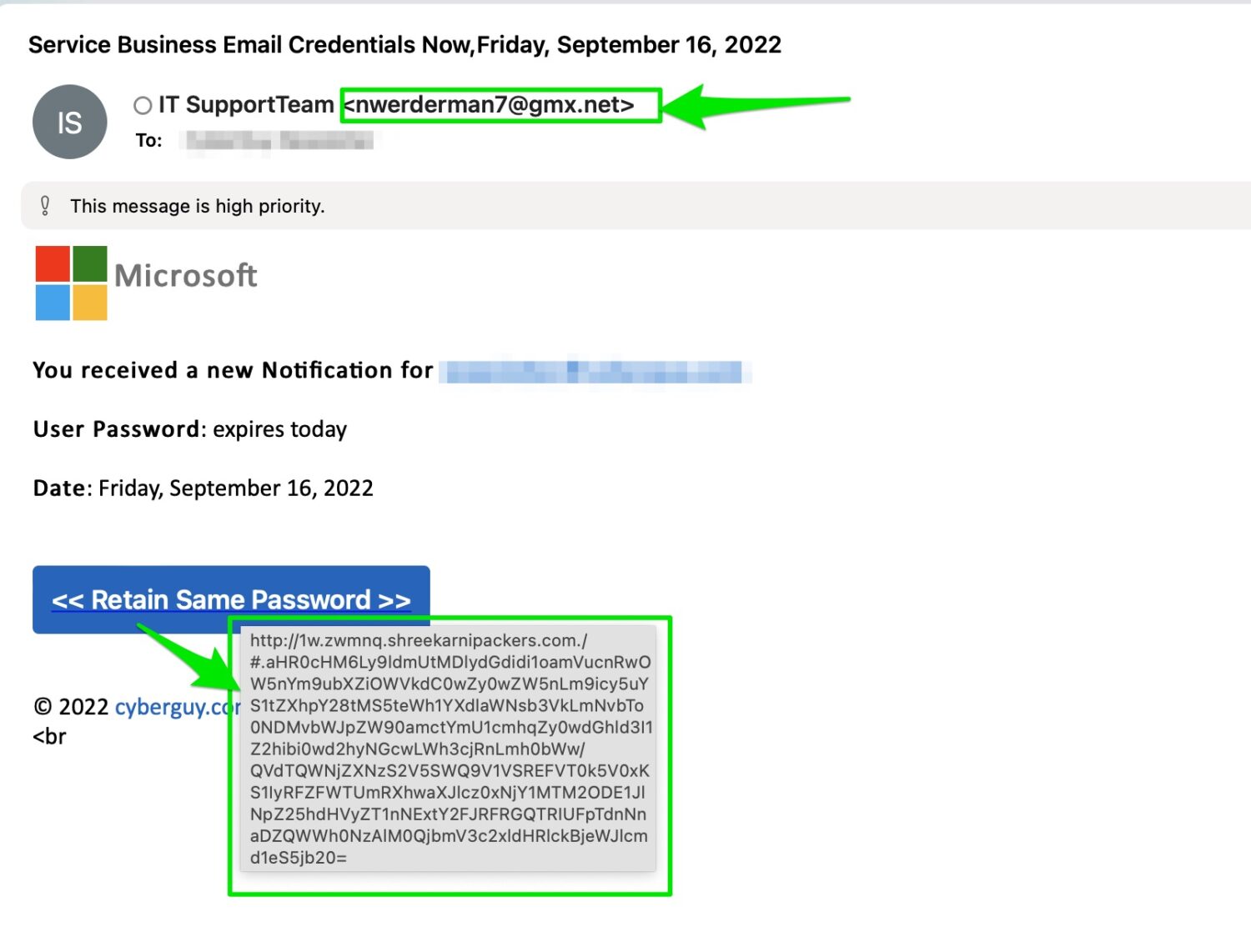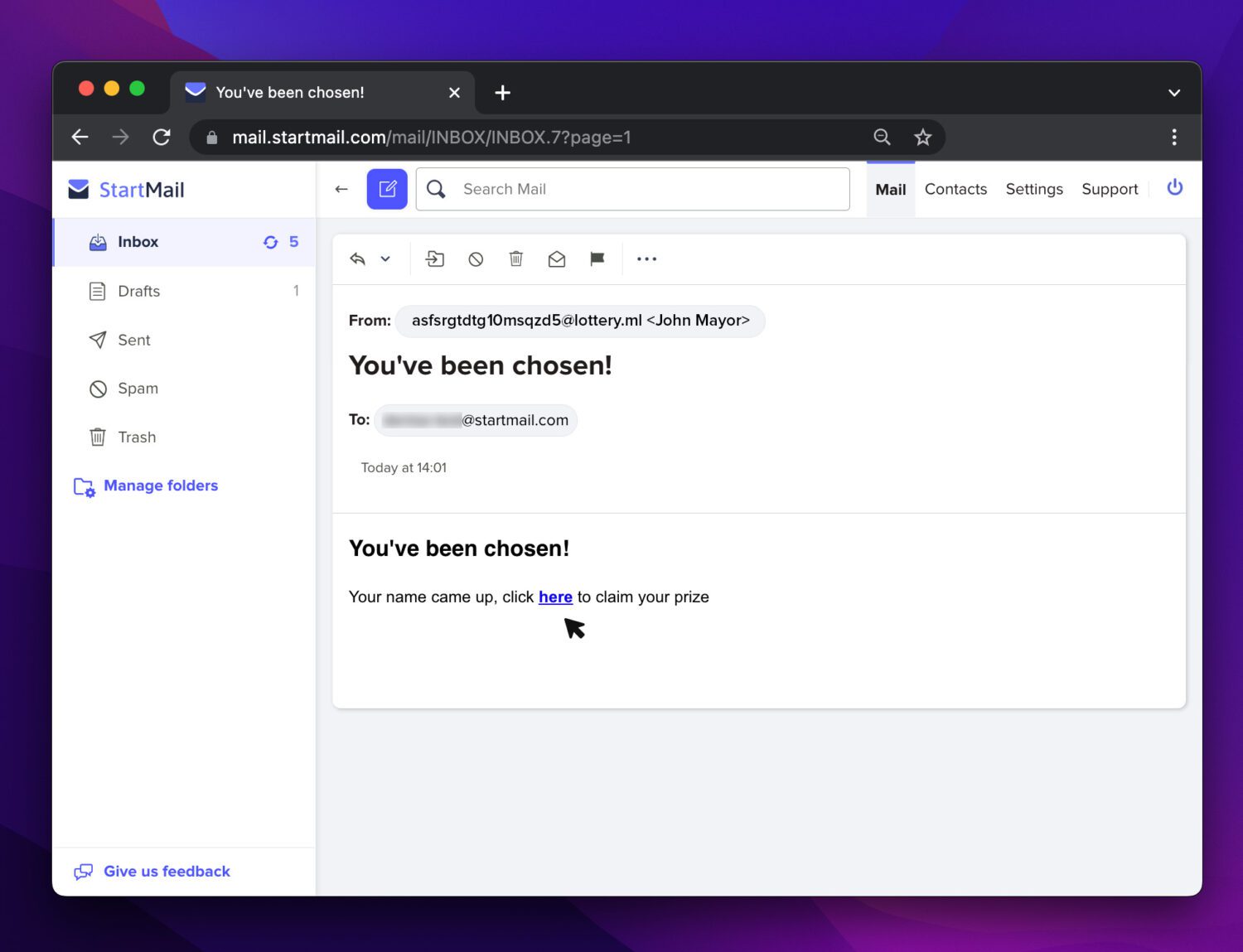Have you ever clicked a link in an email only to later realize you fell for a fake link?
Sometimes links can just lead you to websites that contain advertisements in an attempt to have you spend money, but many links are actually phishing attempts with far more sinister goals to steal your personal information.
Learn how to keep your data and devices safe from phishing. First, let’s hit the phishing basics so that you can fend off this trouble.
Table of Contents:
What is phishing?
A phishing scam is where criminals pretend to be real organizations in their email and text message communications to steal your personal information. In the phishing example below, you’ll note that it claims to be a Microsoft email, but the logo is not quite correct, the actual email address this email comes from is not from Microsoft and if you were to safely hover over the blue button in the email, it would reveal that the email is from some random website and not from Microsoft.

How can you tell if an email is a phishing attack?
Phishing scams often contain links that lead to a different website than they claim to. They can also come from email addresses that may look legit but are actually just scammers tricking you.
A great way to check for potentially malicious links or email addresses is by using an application that can reveal a link before you click it. Our highest-rated private email provider, StartMail has security features that include Malicious link protection which makes it a default setting to see full links before clicking them and putting your device in harm’s way. So if you click a link, it will first show you the following message:
Find out more about our #1 pick StartMail in our article: Best Private and Secure Email Providers
What to do if you fall for a phishing scam
StartMail can notify you of malicious links in emails, but you’ll want backup protection for all of your devices if you should click any malicious links in texts message or on webpages. Be sure to install AntiVirus software on both your computer and your mobile devices so you can be protected (and warned ahead of time) if you should receive or click any link that could lead somewhere dangerous.
Our #1 rated antivirus protection TotalAV (Special CyberGuy limited-time deal: $19 your first year (80% off)) can protect a Mac, Windows PC, iPhone, and Android in case you fall for a phishing scam and click any link that may be insecure and hack you.
How to avoid a phishing hack
- Use an email program like StartMail which offers a number of extra layers of privacy protection and can help catch phishing links as they come in.
- Always install backup protection like TotalAV antivirus software as a precaution against scammers.
We are no longer living in a time when we can ignore threats coming at each of our devices for everyone in the family. Having been a tech reporter for 20 years, if there is one thing I have learned it’s this. You’ve got to be vigilant and you need to protect you and your family by taking the extra steps to lock up your tech.
Learn more about the increase in phishing scams on smartphones and one of the latest email phishing scams pretending to be Microsoft.
Related:
- Microsoft phishing scam – Don’t click that email
- Report: Smartphone phishing attacks are up – Do this now





12 comments
Is there any way to stop sponsored ads on facebook
Unfortunately not. The only thing you can do is hide a specific ad by clicking the 3 dots (…) in the top right of the ad, choose hide ad and then follow the on-screen instructions.